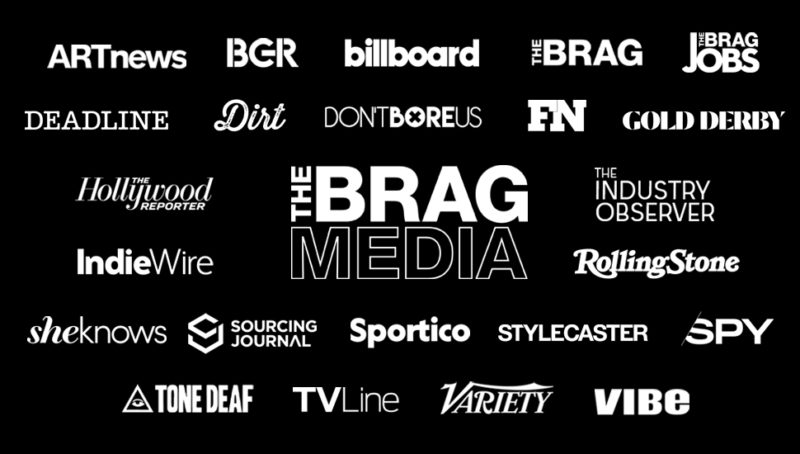
The Brag Media CEO on investing in print despite expecting heavy losses
The Brag Media is continuing to pursue a hyper-aggressive growth strategy. The company has expanded its titles over the past couple of years, and publishing is only one aspect of the multi-faceted business.
Speaking with Mumbrella for this week’s Mumbrellacast, CEO Luke Girgis explains that he and his team are looking to “build a company at the centre of culture.”
“We have a publishing business that services fans and Australians, as well as artists and creators in the industry.”
Girgis also suggests “that publishing side of our business reaches 20% of the population. And then we also have record label investments where we help fund Australian artists, create their albums and grow their careers. Then we have management and agency business, which connect brands with the biggest artists and influencers on the planet.
“Then the content marketing arm of our business, which helps brands reach their customers in really iconic and sort of memorable ways.”

The Brag Media CEO Luke Girgis
As we speak, Sydney is in the middle of another lockdown. But for The Brag Media and its workers, spread over multiple cities and now in New Zealand, it’s business as usual.
“We were set to pull the trigger in officers in Melbourne and New Zealand, and eventually Brisbane. Then COVID hit, we just kept going as we were. The Sydney team obviously moved to work remotely, but we didn’t really miss a step.”
There were lessons learned in 2020 in the first wave of lockdowns, with much of the advertising across music and culture publications coming from big overseas touring artists.
Lockdown had a significant impact on revenue almost immediately, Girgis explains. “When the pandemic first hit one day in March we lost a million dollars worth of revenue in three days.
“That was a big shock to us at the time. 50% of our revenue came from touring or events, or through brands doing outdoor stuff through activations.
“It meant we couldn’t fuck around anymore,” he laughs. “We had to really double down on our growth strategy and get to where [we had planned] to get to in two years, in three months.”
Since late last year, The Brag Media has signed ad representation agreements with a series of major global publications including Variety, and more recently The Hollywood Reporter, SheKnows, Billboard, Deadline and more.
Last month, it also refreshed the branding of its homegrown titles The Brag, Tone Deaf and The Industry Observer, as well as announcing expansion into New Zealand.

All that was off the back of successfully re-launching iconic music title Rolling Stone, both in print and online, in Australia in January 2020.
For a company that has lately focused on its digital publications, the move to produce a glossy magazine was an interesting one, and Girgis admits he expected Rolling Stone Australia to make a loss.
“When I put the magazine in our business plan P&L forecast, I expected it to be a heavy loss for us [but] we wanted to do it because it was culturally important. It gave us a physical representation of the brand. I didn’t think it would be a profit center for us.
So it was a surprise when the numbers came back and the magazine was in the black. “It’s by no means a huge profit centre, but it is profitable, which was an amazing surprise.
“The latest Roy Morgan numbers show that we’ve got 152,000 readers on the audit. So the sales are paying for the cost and then all the ads on top of that are I guess what you could deem the profit. But the real magic now is that it allows for a full-service representation.
“We talk to a brand and go, Sailor Jerrys, you are going to sponsor the Rolling Stone Awards. We’re going to create all of this digital content around everything that we’re doing at the awards, and really align your brand with this iconic Rolling Stone moment.
“And then also give you a lot of exposure in our print magazine as well.”
The worth in the magazine, outside of money, is showing that The Brag Media can execute the physical experience that Rolling Stone gives to consumers.
“Rolling Stone magazine, as I’m sure you’ve seen, is a very different physical experience to what it is online. So it is a borderline coffee table book. It is very, very thick and the cover is textured, there are posters inside.
“We really wanted to give it a physical experience. [Reading the magazine] is the equivalent of listening to vinyl as opposed to listening to music on Spotify.”

The Brag also announced this week that one of its 2020 Rolling Stone covers with viral local artist Tones And I is going to become an NFT (Non Fungible Token).
The NFT has also been accredited by the Australian Recording Industry Association (ARIA), making it a global first for a magazine cover, and also meaning that all NFT bundles sold will count towards the charts performance for Tones And I.
While NFTs are still in infancy in terms of use by brands, Girgis thinks they could have significant use and implications to brands who care about the arts scene.
“I don’t think it’s going to be relevant to every brand. I think if you’re a brand that really wants to connect with art culture, then you should be looking at NFTs because that is the new digitized decentralized version of what art is.”
Listen to Zanda Wilson’s full chat with Luke Girgis below (22:50):


